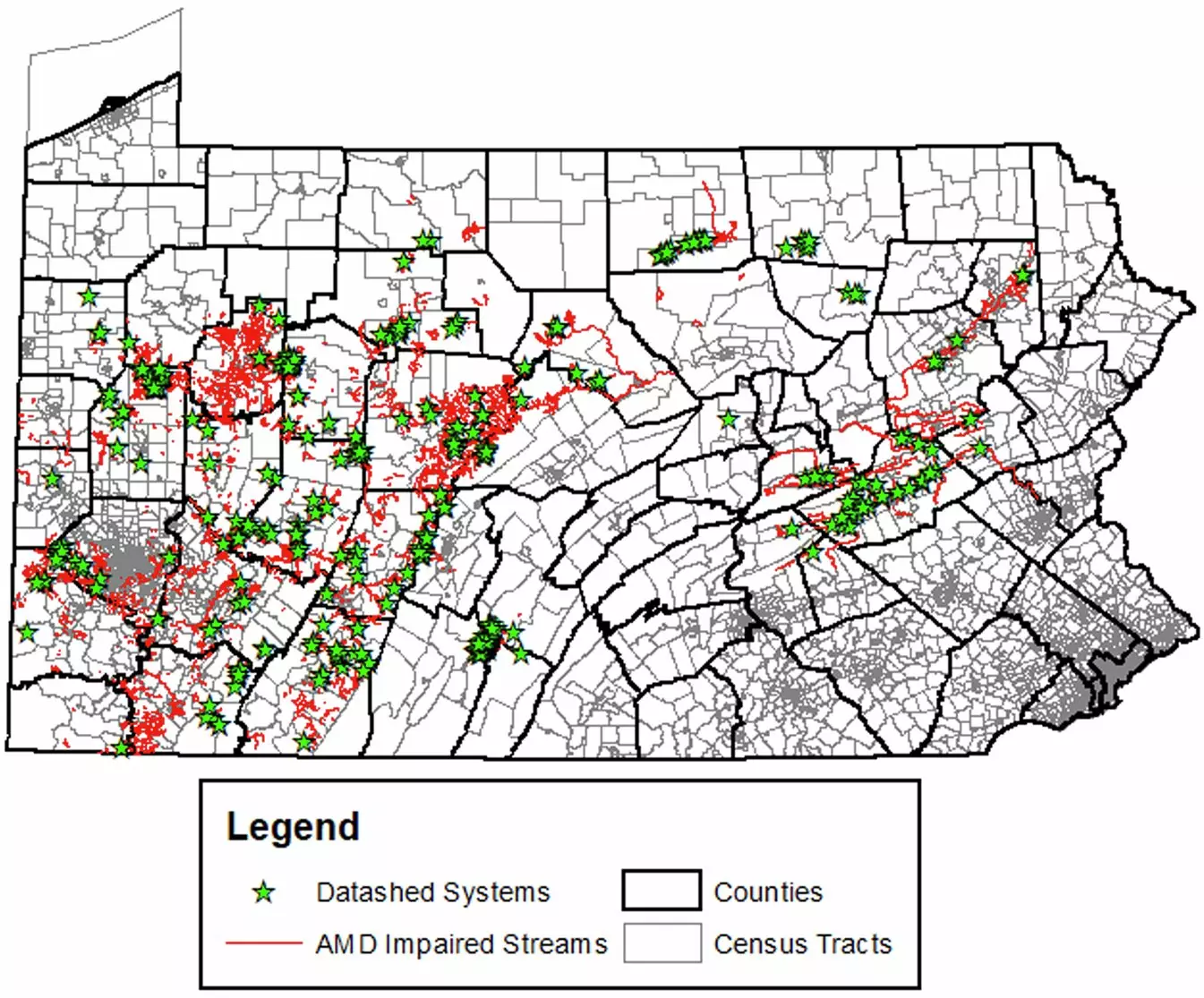Abandoned mine drainage (AMD) remains a significant environmental issue in Pennsylvania, posing threats not only to the local ecosystem but also to vulnerable communities. Recent findings from the University of Pittsburgh underscore the necessity of treating this toxic runoff, which is often laden with heavy metals and acids, wreaking havoc on local waterways. The challenges are compounded by the fact that many of the residents living in proximity to these contaminated streams often belong to economically disadvantaged communities. The alarming reality is that these areas are experiencing the double burden of environmental degradation and limited financial resources, rendering their residents more susceptible to health problems and economic instability.
For over three decades, the Pennsylvania Department of Environmental Protection (DEP), alongside various watershed organizations, has deployed state and federal funds to construct an array of treatment systems designed to mitigate AMD. Over 300 such systems have been put in place, successfully treating contaminated water before it enters local streams, thereby enhancing the overall water quality. One notable statistic highlighted by researchers is that these systems can protect streams at a relatively modest cost of $5,700 per kilometer per year. However, the ongoing integrity of these treatment efforts comes into question when considering the staggering 5,600 miles of waterways still suffering from impairment due to AMD.
The implications of this gap in treatment are significant. As AMD continues to disrupt local habitats, the consequences can ripple through the community, affecting not only health and safety but also property values and overall economic viability. In those communities where attenuation of AMD is desperately needed, the existing resources simply fall short, compromising the effectiveness of long-term remediation efforts.
The transition away from traditional coal energy to more sustainable forms of energy has prompted new investments aimed at addressing these legacy environmental issues. Recent legislation, including the 2021 Infrastructure Investment and Jobs Act (IIJA), allocates substantial funding for the cleanup of abandoned mines and wells. This $16 billion appropriation represents a potential lifeline for many communities grappling with the dire effects of AMD. Yet, the implementation and utilization of these funds remain clouded by uncertainty. It is crucial to clarify who stands to benefit from this funding and how it will be allocated to achieve the most impactful change.
Pennsylvania is at the forefront of this issue, housing a disproportionately large amount of the nation’s abandoned mining sites. As the co-authors of the research indicate, approximately one-third of the funding designated in the IIJA is aimed at Pennsylvania—a state whose communities are already facing significant adversities associated with environmental contamination. The statistics are startling: about 2.4 million Pennsylvanians live in areas where the water quality is compromised, with 500,000 residents in regions severely impacted, having streams with over 50% impairment.
Socioeconomic Disparities and Environmental Injustice
One particularly troubling revelation from the research is the socioeconomic gap between affected and unaffected communities. Residents in areas impacted by AMD have household incomes averaging 30% lower than those in cleaner regions, alongside housing values that may be as much as 50% less. Such disparities lend credence to the concept of environmental injustice, where marginalized groups are disproportionately burdened by the consequences of environmental degradation.
This dynamic creates an urgent need for tailored solutions that not only focus on environmental remediation but also provide economic rejuvenation for those communities. Job training programs targeting displaced workers from the coal industry or initiatives to promote alternative energy jobs could mitigate some of the economic challenges faced by these communities.
The fight against abandoned mine drainage in Pennsylvania requires a holistic and coordinated approach that emphasizes both environmental accountability and community engagement. While existing treatment systems provide a glimpse of hope in restoring water quality, the alarming statistics underscore an urgent need for increased funding and policy support to address the extensive legacy of mining. Prioritizing vulnerable communities in this drive not only enhances environmental health but also fosters economic resilience, ultimately paving the way for a more equitable future. Such concerted efforts can ensure that Pennsylvania’s streams, wildlife, and communities are protected for generations to come.

